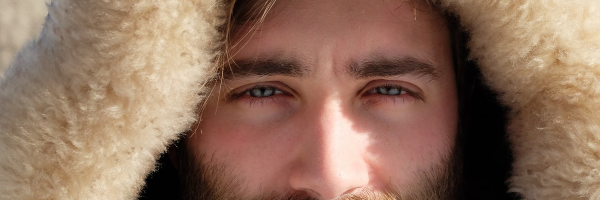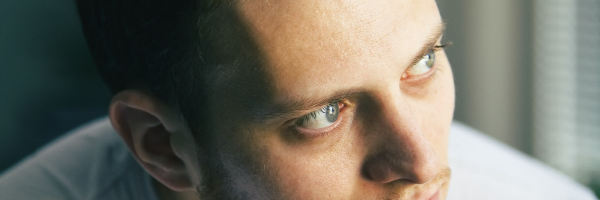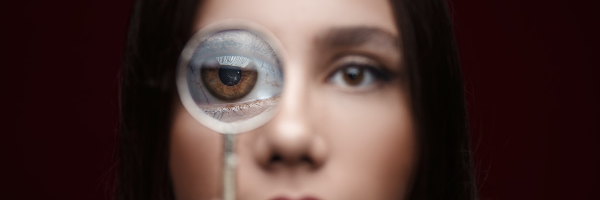The expression of the eyes is often the most difficult to fake. This is because the movement of our eyelids, eye muscles, and eye pupils are not under our conscious control.
There are many things people do with their eyes when they lie – like squinting, blinking more or less frequently than usual, or avoiding eye contact.
However, there are some specific things that will give that person away – like dilated pupils and flickering eyelids.
One of the most reliable signs of lying is blink rate or lack of.
Another sign of lying can be noticeable when you see someone using eye-blocking to try and block out information they don’t like.
There are many tell-tale signs that can be found in body language when people lie with their eyes. We will take an in-depth look below.
But before we do that we need to understand the basics of body language and how to read nonverbals correctly in order to get a true read if someone is lying using their eyes.
- Understanding the basics to get a read on a person’s nonverbal cues
- How to baseline someone before your read
- Reading in clusters
- What changes should we look for in the eyes of a lier
- Pupils
- Eye Squinting
- Eye blocking
- Eye Avoidance
- Eyebrows
- Direction
- Blink Rate
- How do you tell if someone is lying by their eyes
- Summary
Understanding the basics to get a read on a person’s nonverbal cues
Reading people, understanding their non-verbal cues, will help you to better understand them and the situation.
You can often spot a person’s true feelings by observing their nonverbal cues.
Paying attention to these signals will give you the ability to read people like an open book.
Nonverbal cues are powerful tools in assessing someone’s true intentions.
Reading the body language of lying eyes
When it comes to reading body language we first have to understand the context of what situation the person is in.
Context is what they’re doing when you’re trying to read their body language, who they’re with, and what’s being discussed?
The environment is also important. Are they being interviewed by the police? Are they being sat down with family members and being accused of something?
The reason we must think about context is that it is the stress the person is under that will dictate how they behave with their nonverbal and verbal language.
Now we understand a little more about the context we need to learn to baseline someone to notice any shifts in body language to get a true read on them.
How to baseline someone before your read

To get a baseline on a person, we need to ask questions or at least see someone ask non-stressful questions. We are looking at how they act when they reply to a question.
We want to take in any ticks, or movements that look odd to use but perfectly natural to them.
As we start to analyze someone, we can identify these tells from our information.
Reading in clusters
When reading body language, we read in clusters. Shifts in the eyes are a great place to start to read people’s nonverbal tells. You’ll start to pick up short, noticeable shifts in patterns.
When we read body language, we can’t just read one change we have to read in clusters of changes or note changes over a period of five to ten minutes in order to get a true reading of a person.
Simply put, we cannot just take one eye movement as proof that someone is lying.
Note
The best way to read a person’s emotions is to observe their whole body. If you focus on small parts of the body, it can’t give you a true reading.
However, there are some body language cues we can look out for to tell us if someone is being deceptive. The eyes and the area around the eyes have been shown to be good indicators.
What changes should we look for in the eyes of a lier

- Pupils
- Eye Squinting
- Eye blocking
- Blocking the eyes
- Eyebrows
- Blink rate shift
- Direction of eyes
- Relaxation and Tension
Pupils

Most people think that pupil dilation is a sign of lying, but it’s actually when we are most comfortable or like something we see or meet.
We can use this to our advantage when trying to extract information from someone by building rapport and observing pupil dilation. Worth remembering.
On the other hand, pupil constriction is when the pupils shrink, almost like a pinprick. We usually see this when we see something we don’t like or when we are feeling negative emotions.
Pupil dilation or constriction is one of the few body language behaviors that we can’t control which makes them all the more reliable.
Eye Squinting

Eye squinting is a response to stress, displeasure, or anxiety. Sometimes a person might also squint if they are confused or hear something they dislike.
If we see someone squirting with their head down, this could be a sign they are focusing on something or trying to figure something out. Context is key when we see eyes squinting.
Eye blocking

Eye blocking is when you see the eyelid is closed, as the person you are analyzing is put under stress or starts to feel more anxiety towards something.
You usually see eye-blocking when someone is trying to block out a question or something they don’t like.
Eye Avoidance

We avoid eye contact when we feel embarrassed or under stress. This gesture can also be an indication of shame if somebody is being overly critical, awkward, or aggressive. They can often be a sign of submission as well.
Eyebrows

Can you tell if someone is lying with their eyebrows?
Eyebrows are the most important feature in the human face that can tell when someone is lying.
The left eyebrow raises, which means they are trying to cover up their lie. The right eyebrow arch decreases, which means there is uncertainty in what they are saying. The left eye squints, which can be a sign of anger or anxiety. The mouth opens and their jaw drops slightly, which could mean they are feeling uncomfortable or surprised by what you said.
Direction

What direction do people’s eyes go when lying.
There has been a myth for decades that a person looking away or to the side when answering a question is being deceptive.
You can, however, use this when asking questions. Notice how they answer questions that are not stressful what direction do their eyes go to? If you notice a change in direction, this is a good data point to explore.
Some experts believe that looking downright is accessing emotions, but this isn’t always the case.
Blink Rate

Is blinking a lot a sign of lying
Blinking is the most commonplace and natural reflex in human beings. It may be an indication that someone is lying, as they blink less when telling falsehoods. This occurs because liars want to see if you believe them.”
Pay attention to when you see the blink rate decrease in a person. This is also another great data point.
How do you tell if someone is lying by their eyes
It is said the eyes are the windows to the soul. In a brief moment of eye contact, you can determine someone’s emotional state, their level of honesty, and even some personal traits.
But how do we know if someone is lying?
One way is by looking for microexpressions – fleeting expressions that appear on our faces before we can control them.
Microexpressions occur with an intensity that may only last a fraction of a second and often cannot be detected consciously.
This makes them hard to study and research, but it also means they are spontaneous enough to show up when someone is trying to conceal feelings or thoughts they don’t want you to see.
Paul Ekman’s book, Unmasking the Face, covers micro-expressions in-depth and he is the guy who coined the term micro expression.
Summary

When we look at the body language of lying eyes, we need to take context and environment into consideration. We can’t just read the eyes – we have to read the whole of the context and shifts in behavior before we can make a decision about whether someone is lying with their eyes.
It is not always easy to tell when someone is lying, but there are some things you can look for that might help you determine whether or not they are telling the truth. For example, if someone’s eye contact is broken and they’re looking elsewhere, this could be a sign that they’re not being completely honest with what they’re saying.
There are many different reasons why people lie with their eyes. Some of these reasons may include: • To gain sympathy • To gain trust • To gain approval • To avoid negative consequences
The most important thing to look for when you’re trying to find out if someone is lying with their eyes is that they’ll blink less and move their eyes more than usual.
To find out more about body language check out our other blogs here.

